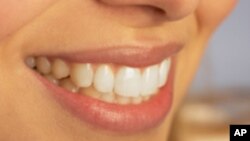For most Americans – and dentists say it should be all – each day begins and ends with the modest ritual of brushing their teeth. Not only would their mothers be proud but so, too, would the 4th century Egyptians who are said to have made the first toothpaste from crushed up flower petals.
We have, of course, progressed in 17 centuries. Today, toothpaste contains no flower petals, but lots of sodium fluoride, hydrated silica, sorbitol, glycerin, tetra potassium pyrophosphate, and a little bit of mint to make the aforementioned ingredients taste better.
It was a long and winding road to get here. The Greeks and Romans added crushed shells and sometimes bones to the Egyptian recipe to provide a bit of abrasive and, perhaps, get rid of some of the evidence of all the wars they fought.
In 18th century America, burnt bread was sometimes used in toothpaste, perhaps another case of getting rid of unwanted evidence. By 1900, laboratory chemistry had found its way into American mouths with a mixture of hydrogen peroxide and baking soda forming the basis of commercially-produced toothpastes.
<!-- IMAGE -->But, it was Dr. Washington W. Sheffield of New London, Connecticut who, in 1892, made the great breakthrough that would eventually deposit globs of toothpaste on sinks across America. He invented the toothpaste tube. Or, more precisely, his son brought the idea back from Paris where he had seen artists squeezing paint onto their pallets from little tubes.
Oil paint and toothpaste are of much the same consistency and, indeed, serve much the same purpose – to change color – and so Dr. Sheffield's Creme Dentifrice squeezed onto store shelves across America. The Colgate Company took note and, four years later, began packaging its toothpaste in tubes remarkably similar to Dr. Sheffield’s.
For the scientifically curious, experiments show that there are approximately 2.87 meters of toothpaste inside a 170-gram tube. One group of college students, with far too much time on its hands, calculated that, if the average toothbrush is about 2 ½ centimeters long, there would be approximately 114 applications in a tube.
<!-- IMAGE -->It’s a profitable product. Last year, in the United States, toothpaste sales approached $2 billion. Some of that, of course, is waste, but probably not much. People who think nothing of paying two or three dollars for a cup of designer coffee have been known to attach little plastic spindles to the bottoms of their toothpaste tubes so they can roll them up like a tiny window shade and, thus, squeeze out the last penny’s worth of paste.
Most everyone else flattens the tubes by hand, usually splattering the sink – or themselves - with paste or, worse yet, if they left the cap on, splitting the tube turning frugality into folly. However, if they brushed first, they can still mount a winning smile and carry on regardless.





